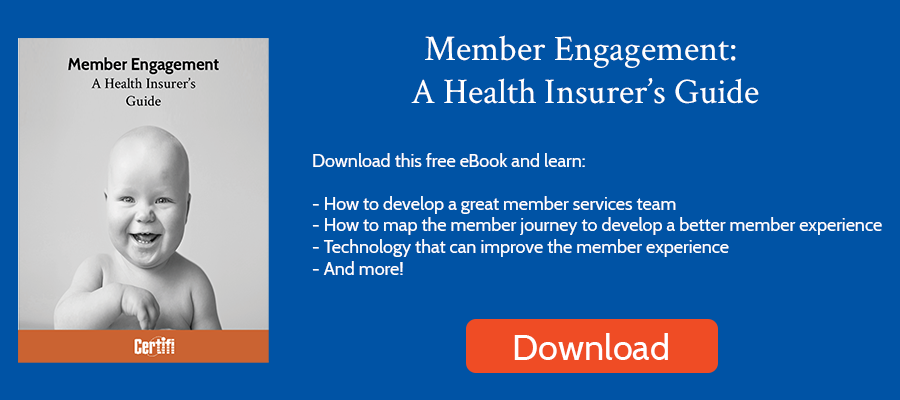A few months ago we examined the 2023 Medicare Advantage Star Ratings that compare the quality of plans among various metrics.
For 2023, the Centers for Medicare and Medicaid Services (CMS) made several changes – including more heavily weighing member experience measures – that caused star ratings for many plans to decline.
As a result, plans are examining some of those member-facing processes to improve the member experience – and star ratings. If you’re one of them – or if you’re exploring process improvement strategies – here are six tips for health insurance process improvement success:
Align Process Improvement To Business Goals
If you’re undertaking a process improvement program, align improvement actions to business goals to get buy-in. Most organizations have hierarchical targets that cascade down through the organization.
For example, your health plan may have a goal to improve member engagement by 5%. Your member services team may set a goal to enhance the member onboarding process. The finance team may seek to refine the premium billing process. Your technology team may aim to improve specific member-facing software. Though each team has a different process improvement activity, they all help the company achieve its goal of improving member engagement.
Measure Before and After
To understand the success of your process improvement, you need a baseline to compare the after to the before. For example, say you’re looking to turn a paper-based claim processing process into an electronic one. There are probably a few measures that can help you determine the success of the new process:
- How long does it take? Complete a time study to understand how long the process takes before and after process digitization.
- What’s the error rate? Hopefully, the digitized process lowers the error rate.
- What does it cost? Try to determine the ROI of the new process
There are probably other measurements to take, but you get the idea. For every health plan process improvement you take, there are likely two or three core measures that can help determine the success of your health insurance process improvement.
Use the Scientific Method
Instead of making wholesale changes, it’s always best to take a scientific approach. For example, imagine you want to modify a specific member workflow within the member portal. After you’ve analyzed what might improve the workflow, create a test to determine what impact the new workflow may have. You could create a focus group to trial the process and provide feedback. Or, you could make it available to a small subset of members and measure their response.
Then, using the measures you defined earlier, you can review the test results and further tweak the process before it goes live. By following an iterative process that tests improvement theories, you’ll be able to measure the process improvement’s impact before it impacts all members.
Look for Automation Opportunities
Automating manual, time-consuming tasks can save time and redeploy your staff to high-value activities. For example, studies have shown that much of the data in provider directories is wrong, missing, or incomplete, leading to a poor member experience.
That’s likely because it’s a manual process to collect provider data. Automating the collection of provider data can improve the data accuracy of your provider directory while freeing your staff for more productive activities.
So look for ways to automate some of the mundane and error-prone processes. Several emerging technologies can help – including robotic process automation (RPA) and…
Consider AI
At its core, artificial intelligence (AI) takes human tasks that require decision-making and leverages computing power to complete the activity. We’ve previously discussed how the US Health and Human Services (HHS) created an Artificial Intelligence strategy and discussed some AI Use Cases in Health Insurance.
But there’s a reason almost all health insurance technology leaders plan to invest in artificial intelligence solutions in 2023. AI can help automate manual tasks, even those with relatively complex decision-making.
For example, in our billing and payment software, we found that deciding which accounts to apply payments that arrived without a coupon was a time-consuming task. We use AI that reads check data and then presents an employee with the most likely accounts. As a result, we process four times as many unmatched checks. Additionally, AI learns over time by watching the human decide where the payment belongs, improving accuracy.
Don’t Forget About People
Some processes may be inefficient because of your organizational structure or employee management practices. For example, I know a company that incentivizes employees on how fast they onboard new customers. So the focus of the onboarding team is moving fast, not necessarily ensuring customers can use the software. That leads to churn because the company trained users fast, but not thoroughly.
That’s just one example of why the right incentives and aligned organizational structure can help improve processes and business performance. But there are countless other ways that your largest resource – your people – constrains process efficiency. Don’t overlook identifying and fixing how your incentives and organizational structures may limit efficiency.
Certifi’s health insurance premium billing and payment solutions help healthcare payers improve member satisfaction while reducing administrative costs.



